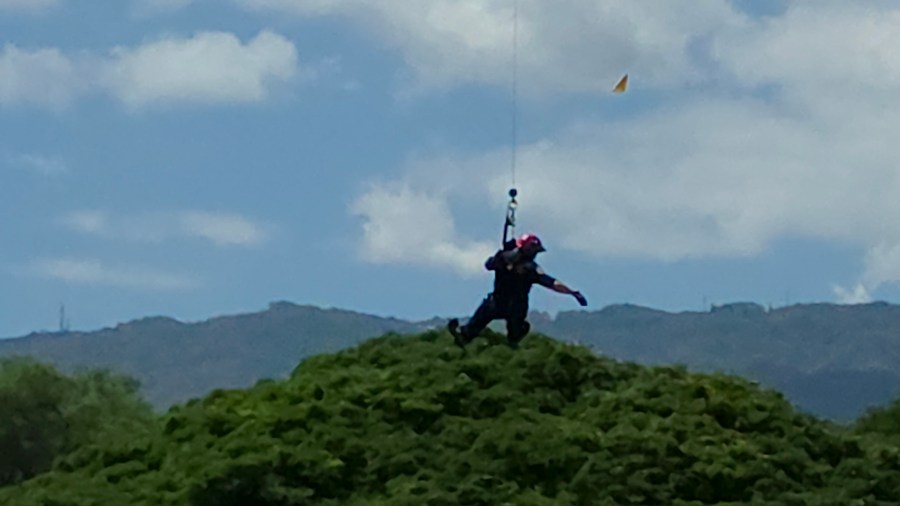HONOLULU (KHON2) — Hiking on Oʻahu is a very common activity for both residents and visitors. And having to be rescued from a hike is also fairly common.
So, KHON2.com caught up with two of Honolulu Fire Department’s leaders in the rescue game to find out what they see most often and how you can ensure you don’t have to meet them in a rescue situation.
Every year, HFD teams respond to hundreds of mountain rescues; and many of them are on popular trails like Diamond Head and Koko Crater.
Others take place in far more dangerous spots: illegal ridgelines, overgrown valleys and narrow ledges where one wrong step or sudden gust could turn a hiker’s mistake into a life-or-death mission.
“It’s not just the hikers that are at risk,” said Zachary Potter, pilot for HFD. “It’s also the rescuers.”
Popular trails don’t mean safe rescues
Some of the most common rescue calls happen on paved or worn-down paths crowded with tourists. That doesn’t make the job easy.
Adrian Cravalho, captain for HFD Rescue 1, said these trails create a false sense of security.
“It’s a heavily trafficked area,” he said, “but people will then find out when they get up towards the top that they’re overexerting themselves, and they will need assistance to get back down.”
On Koko Crater, the trail is short but steep. On Diamond Head, the sun bakes the ground by midmorning. The terrain alone can cause exhaustion, twisted ankles or heatstroke.
“We’ll interact with the public,” Cravalho said, “and they’re like, ‘Oh, I just want to go to the top and see the sunrise,’ but they’re not in the physical condition to make it up and down safely.”
Illegal trails put everyone in danger
What makes rescues on unauthorized trails so dangerous isn’t just the terrain. It’s the lack of access. Steep ridgelines, crumbly rock and unpredictable weather often force teams to rely on helicopters, hoists and rope systems.
Potter described one well-known ridgeline as “one of the more challenging spots to fly,” where strong winds and tight turns force the aircraft to its limits.
“When we’re flying in and around the mountains,” he said, “it’s hard to predict what the wind is doing.”
On narrow ridges, it can be impossible to land. In those cases, crews lower a harness to the patient, then hoist them directly into the aircraft. The new twin-engine helicopters help: “If one engine fails, we can actually keep it in the air,” Potter said.
But even with better equipment, the risks never go away.
“Sometimes we’ll get there, and we’ll actually let the incident commander know—it’s too windy or the cloud cover is too low,” he said. “We’re not able to safely do this job.”
Every call is calculated
There is no shortcut to mountain rescue. Teams must work with complete trust, constant communication and daily training. Cravalho said every mission depends on precision.
“We literally are each putting each other’s life in the bottom of this helicopter or off the side of a mountain,” he explained.
Training includes rope rescue, confined space operations and even underwater dive recovery. “We all train together, we all have that same mindset,” Cravalho added.
Still, the most important work might happen before a hiker even takes a step. “Know your limits,” Cravalho said. “Know where you’re going. Do the research. Bring water. Go with a friend.”
Because when something goes wrong out there, someone else has to come get you and the mountain doesn’t care if they make it back.
